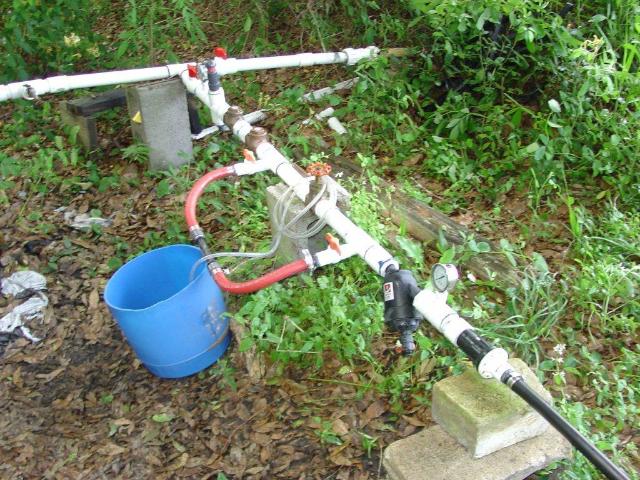By Clint Thompson
Multiple factors impact the efficiency of a fertigation system in watermelons.

Credit: UF/IFAS
Mark Warren, University of Florida Institute of Food and Agricultural Sciences Extension agent in Levy County, stresses the importance of being more efficient with your resources, especially when nutrients are expensive and in limited supply.
“I think it’s tough to put an accurate economic dollar on it right now based on the limited amount of information we have. Definitely, we’ve got to be better stewards of this resource because it’s so expensive. We can’t afford to put it out there and not get exactly where we want it,” Warren said. “I remember years ago I had a guy come in and spread fertilizer on a hay field for me. He spread it, but he didn’t spread it good. He had big skip areas and said, ‘Well it’s all out there.’ But I said, ‘Yeah it’s all out there, but I’ve got areas where I produced a lot of grass, and areas I didn’t produce any.’
“It’s the same thing if we’re looking at drip irrigation in these watermelon plants. The fertilizer’s getting out there, but it’s not getting uniformly out there. My ability to capitalize on that uniform spread is diminished greatly.”
Various Factors
If growers expect to get the most bang for their fertilizer buck, they need to be mindful of various factors.
The proximity of the system’s injection point to the field is significant, especially with respect to the farthest emitter point in the field. If the injection point is moved as close as possible to the field, it provides a quicker opportunity for the fertilizer to be fully delivered. If farmers shut the system off prior to completion, they could leave fertilizer in the pipe. It’s then at risk to be leaked out in the lower parts of the field. Now, a grower has patches of his field with fertilizer and patches that don’t.
It’s also important to consider the flow rate of your drip tape. The higher the flow rate, the quicker the fertilizer will reach its target and more likely to get out of the system.
Fertigation combines fertilizer with irrigation water using a drip system that’s implemented in vegetable crops.
“A lot of times we’ll start a crop with a dry conventional fertilizer. It’s a limited amount, kind of what we call a starter fertilizer just to get things going. But we’re using our drip irrigation system that’s already in place. Injecting fertilizer into it gives us a way to spoon feed the nutrients we need throughout the season without running the risk of leeching it and having a lot of dry fertilizer that’s not being used,” Warren said. “We use fertigation as a more efficient way to deliver fertilizer to the crop in a prescribed manner.”









